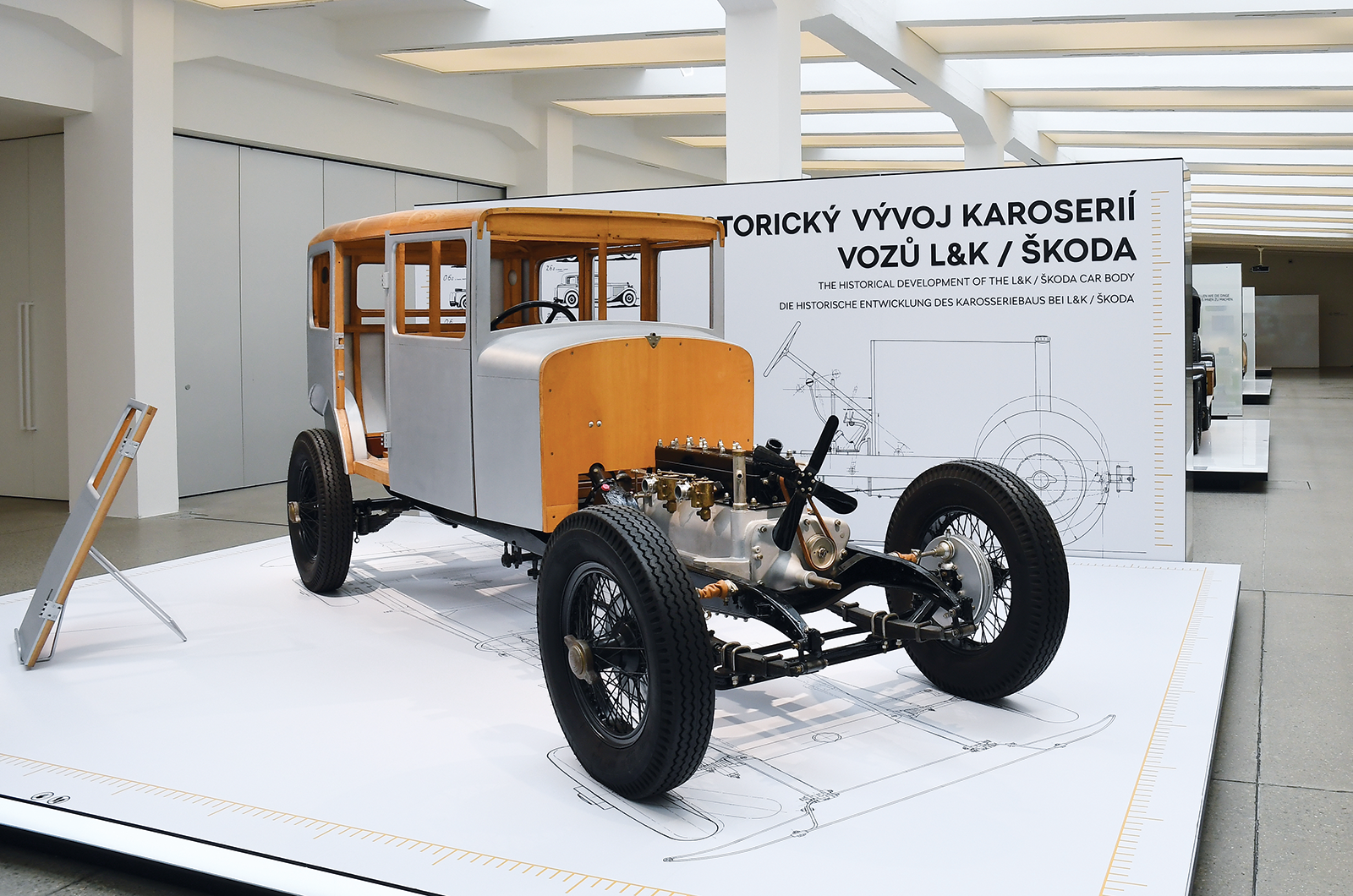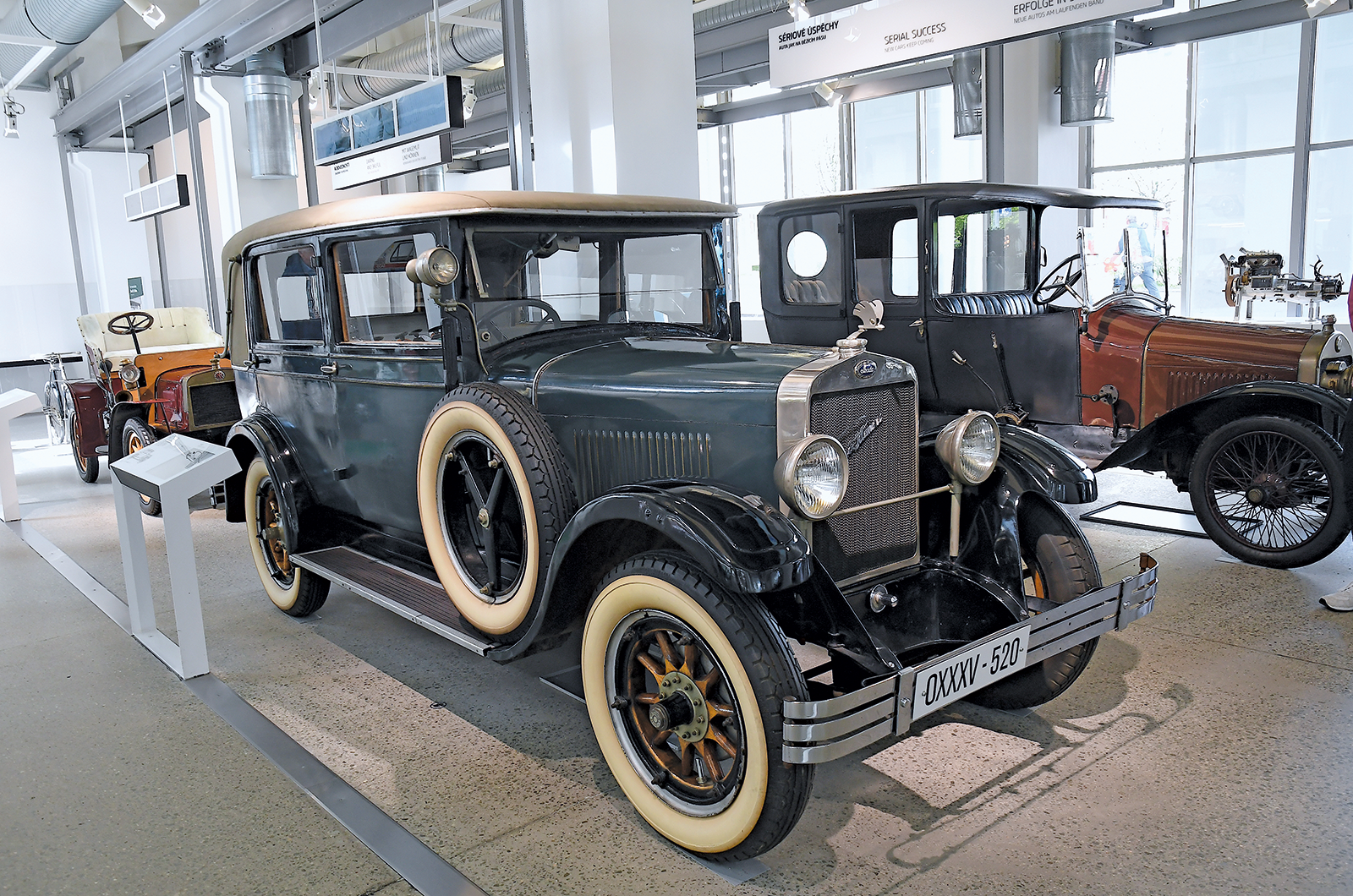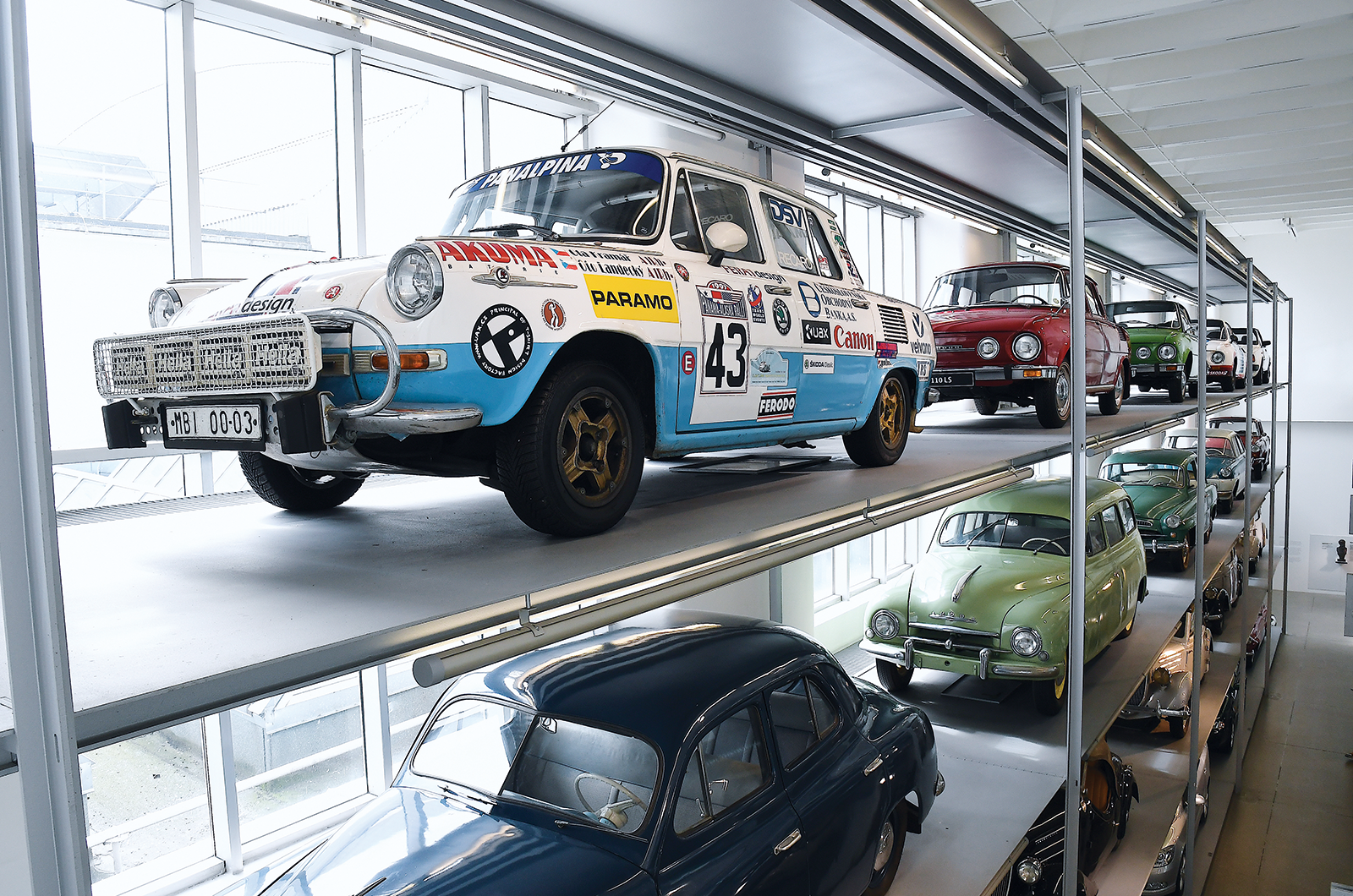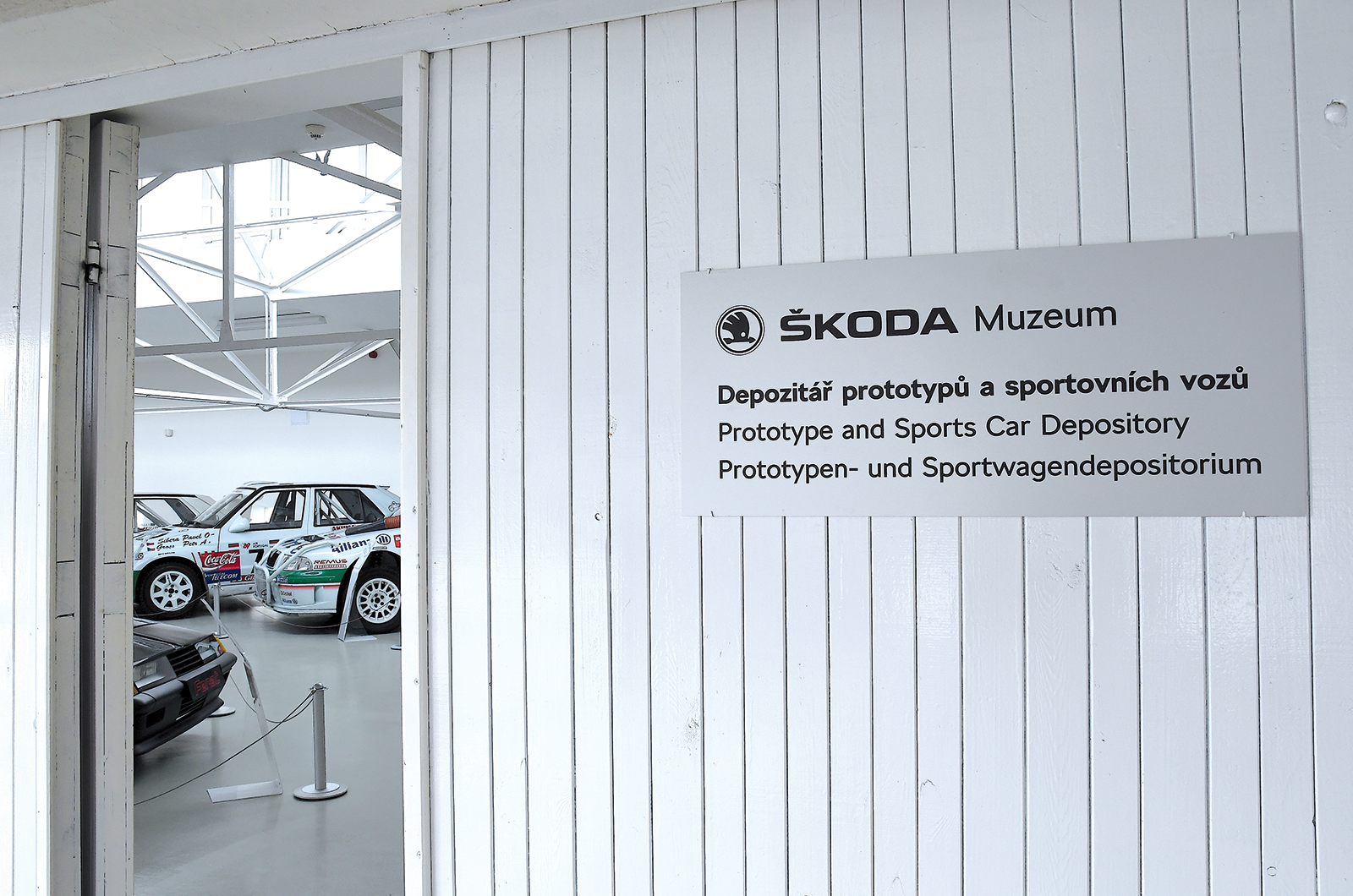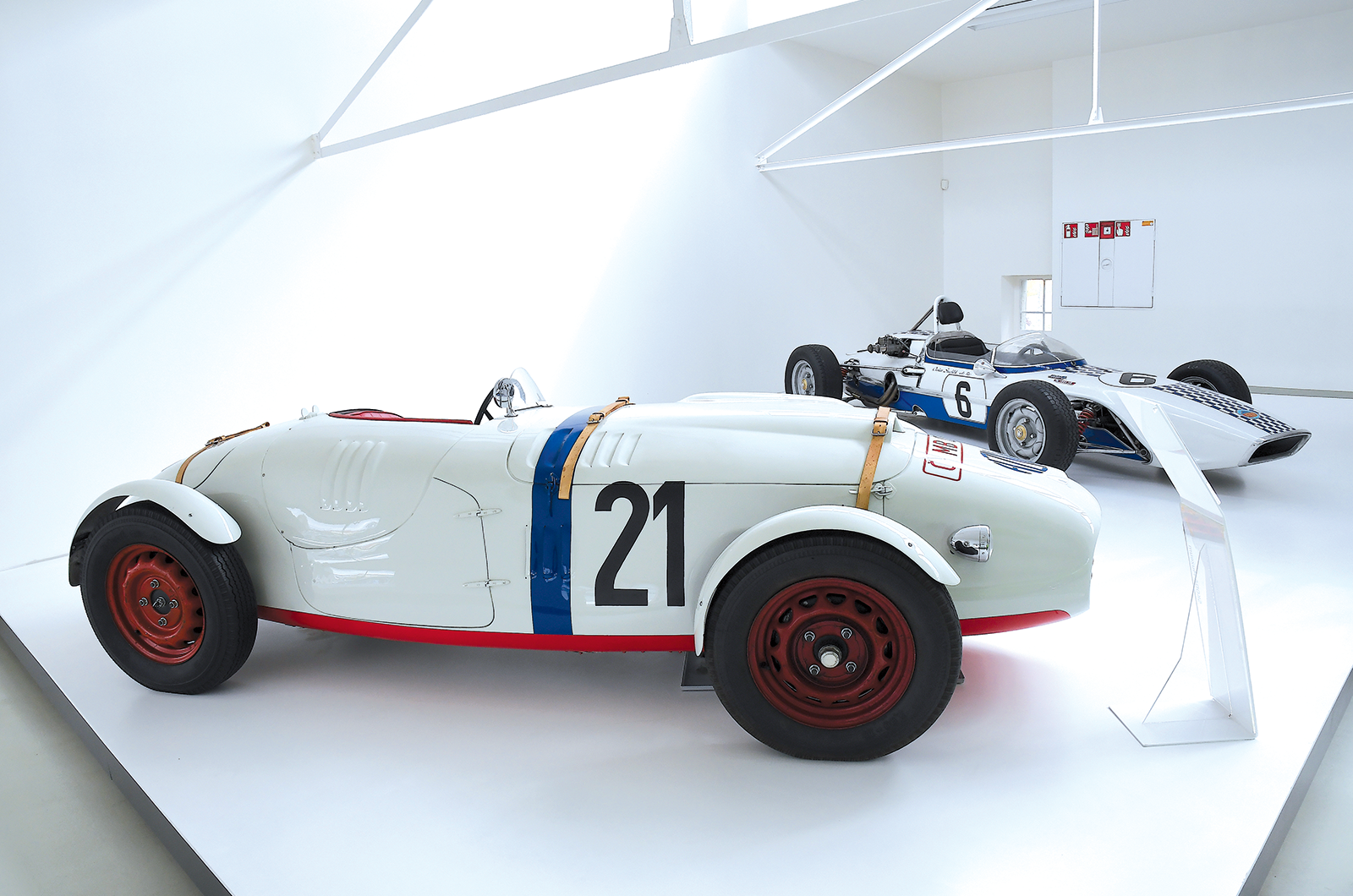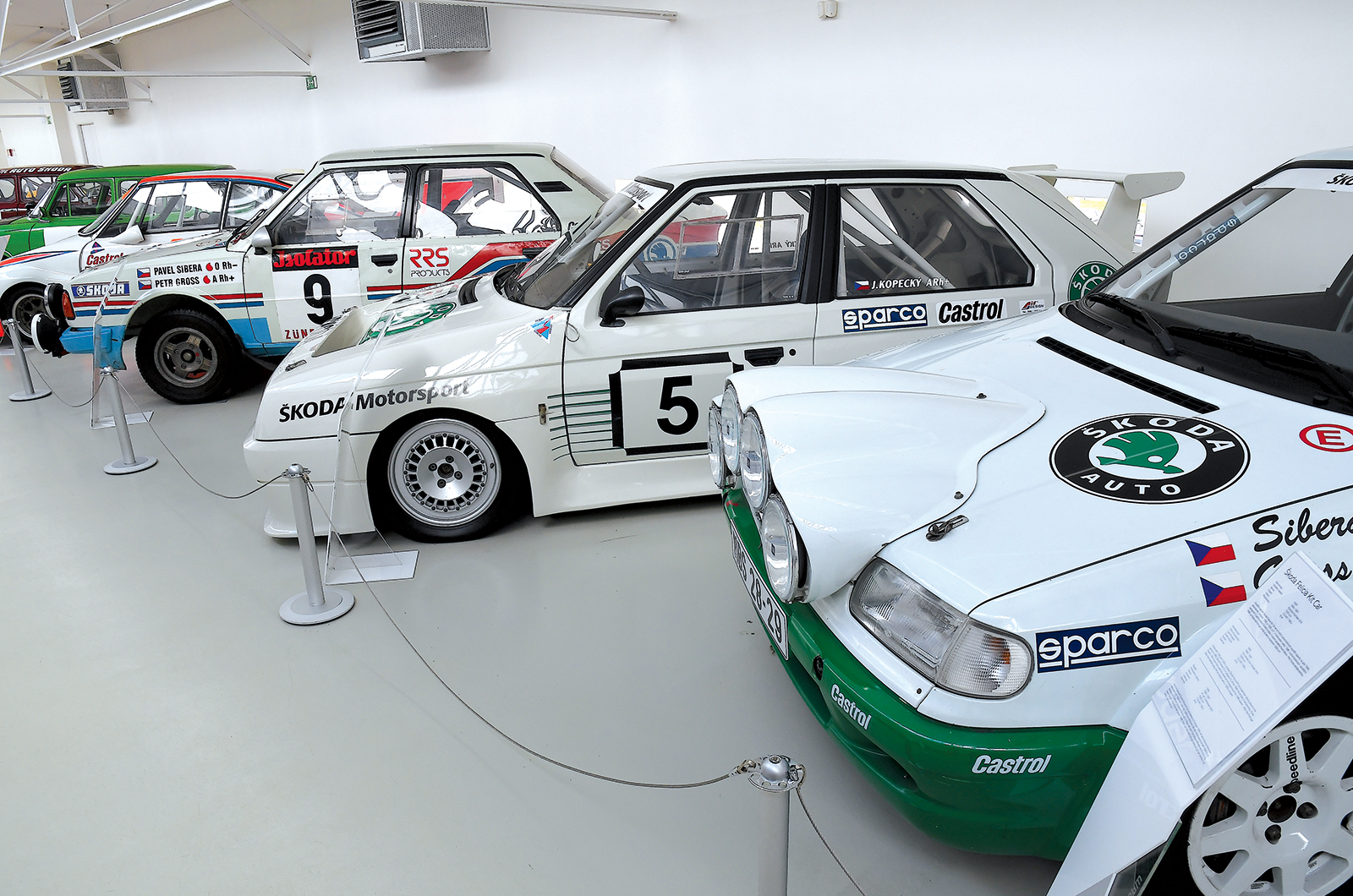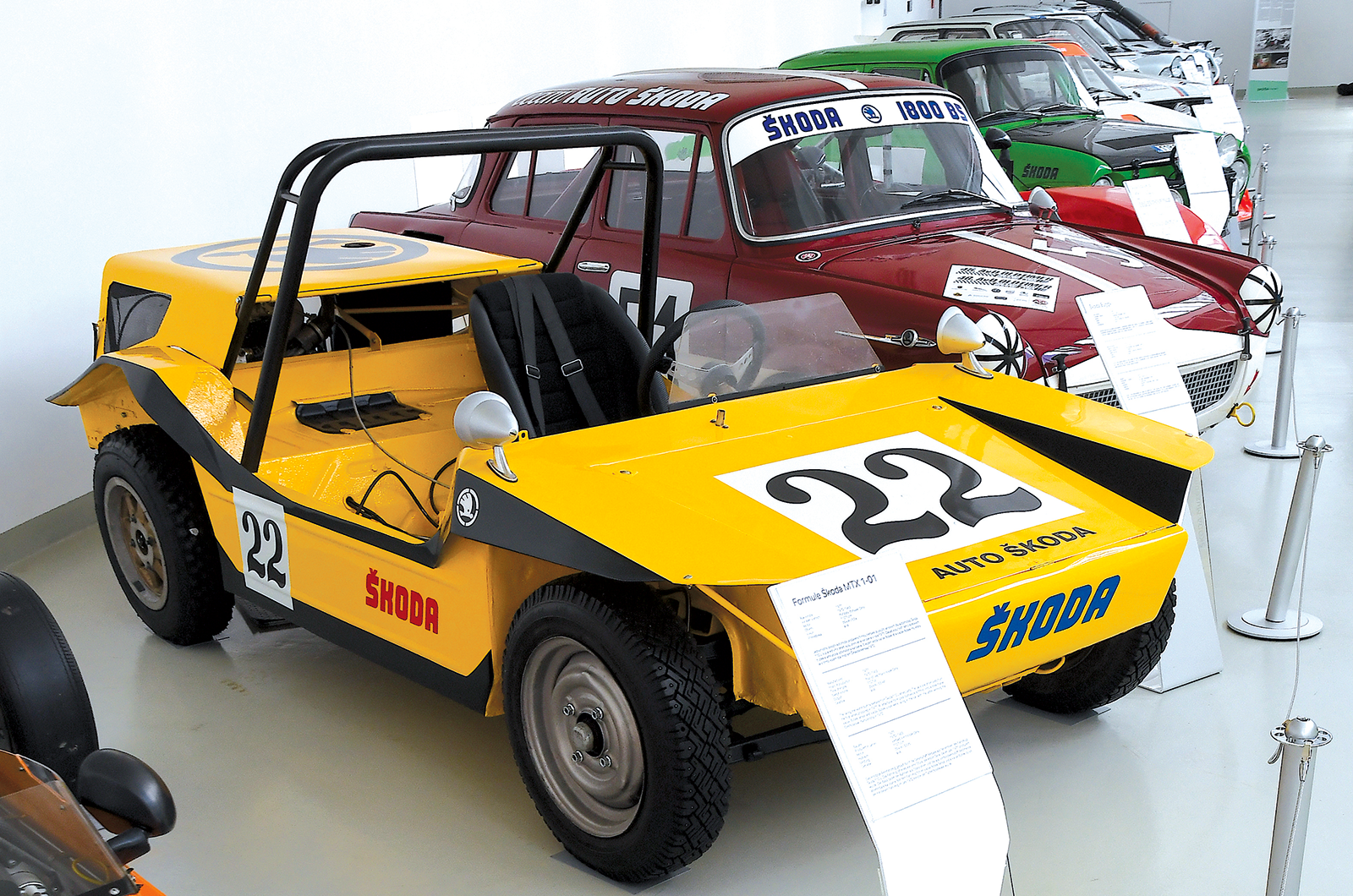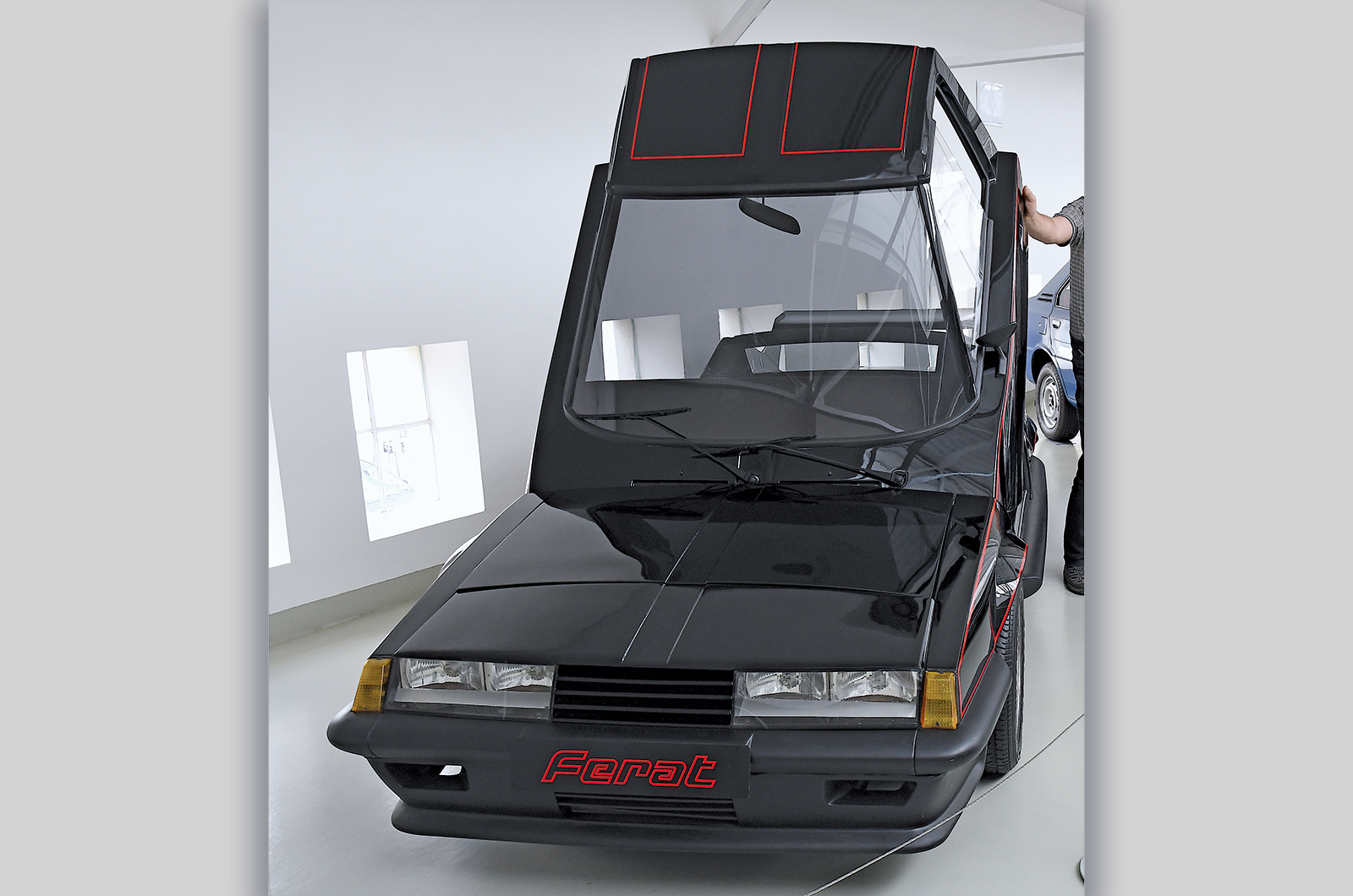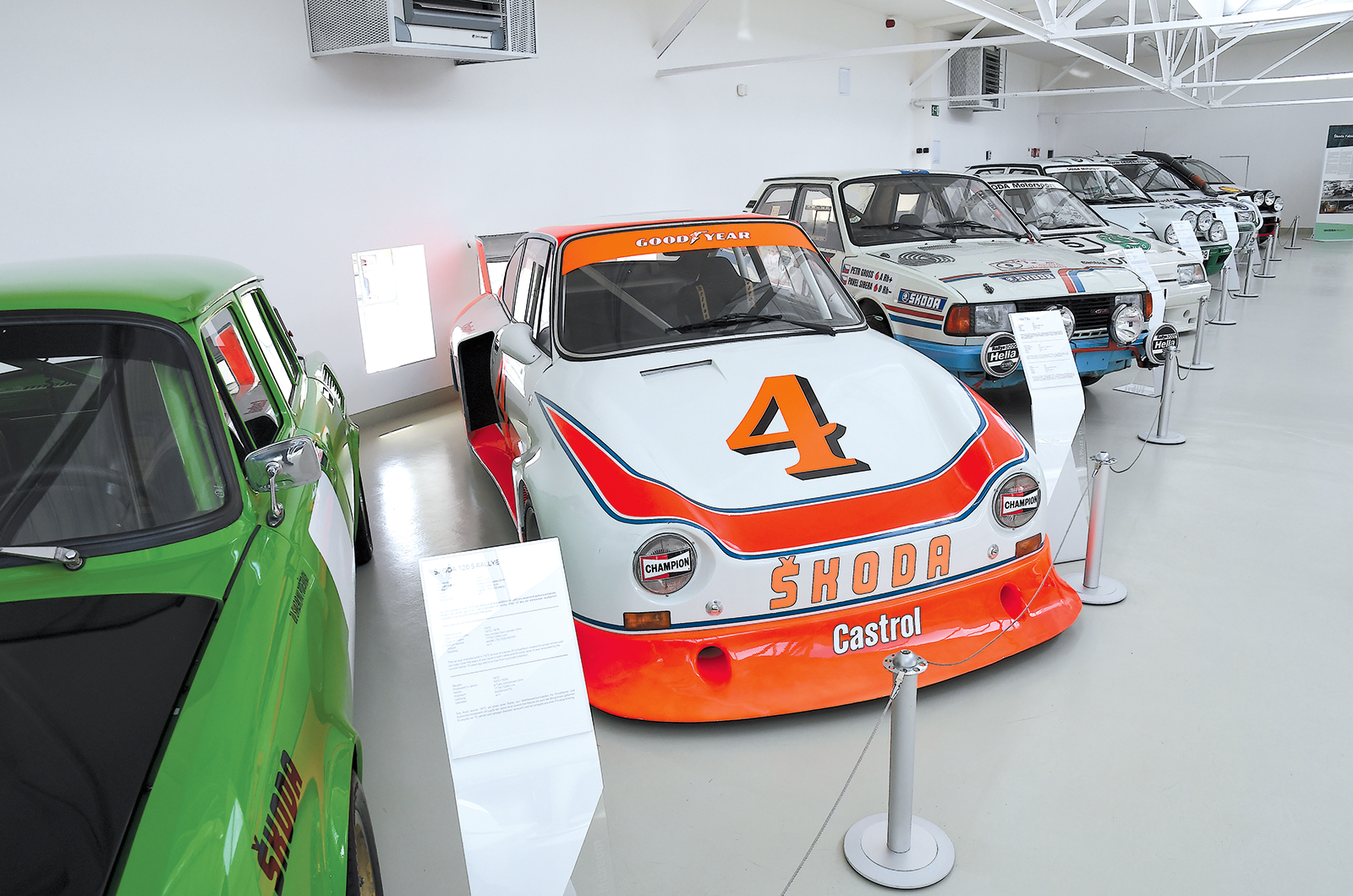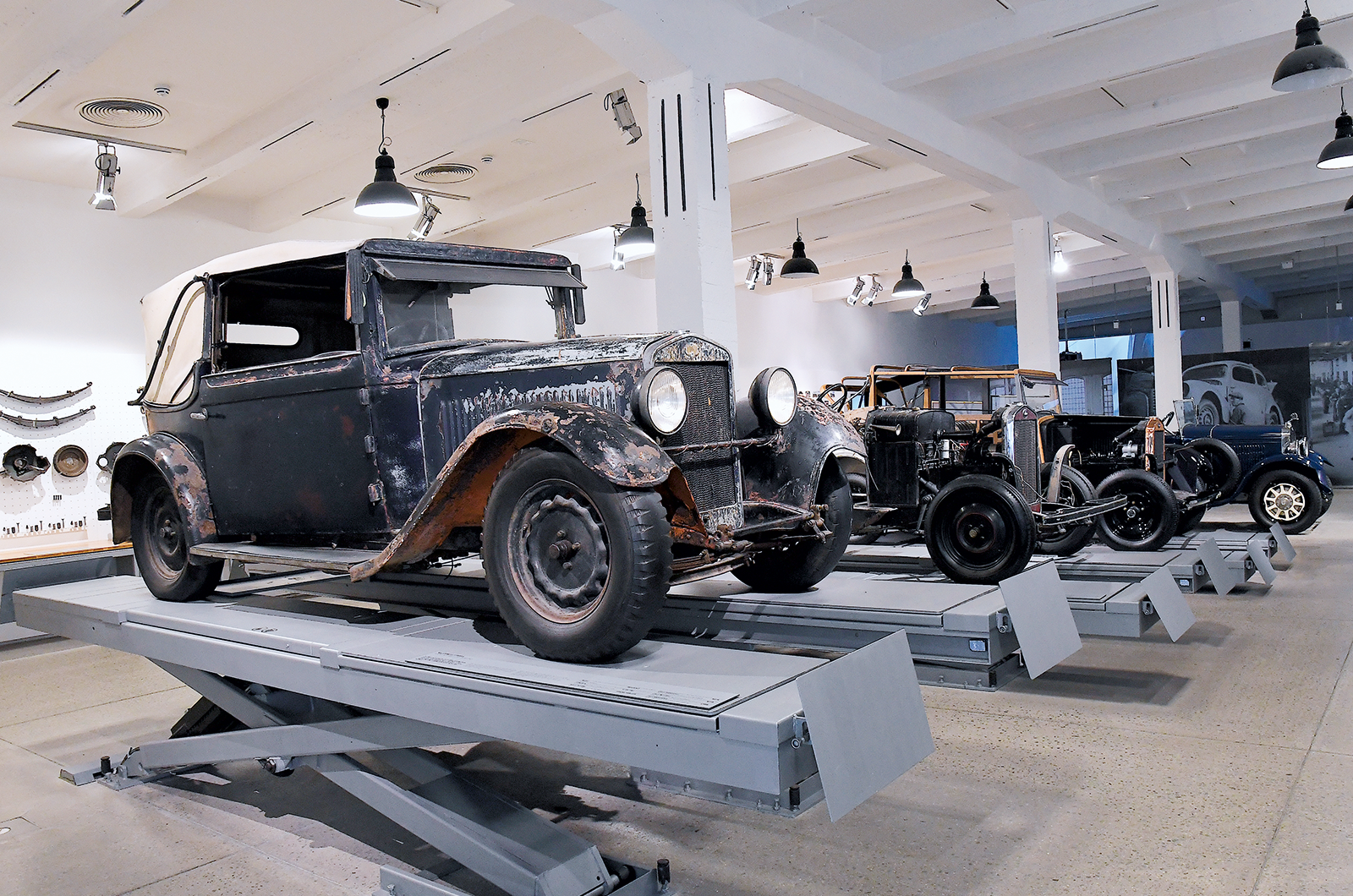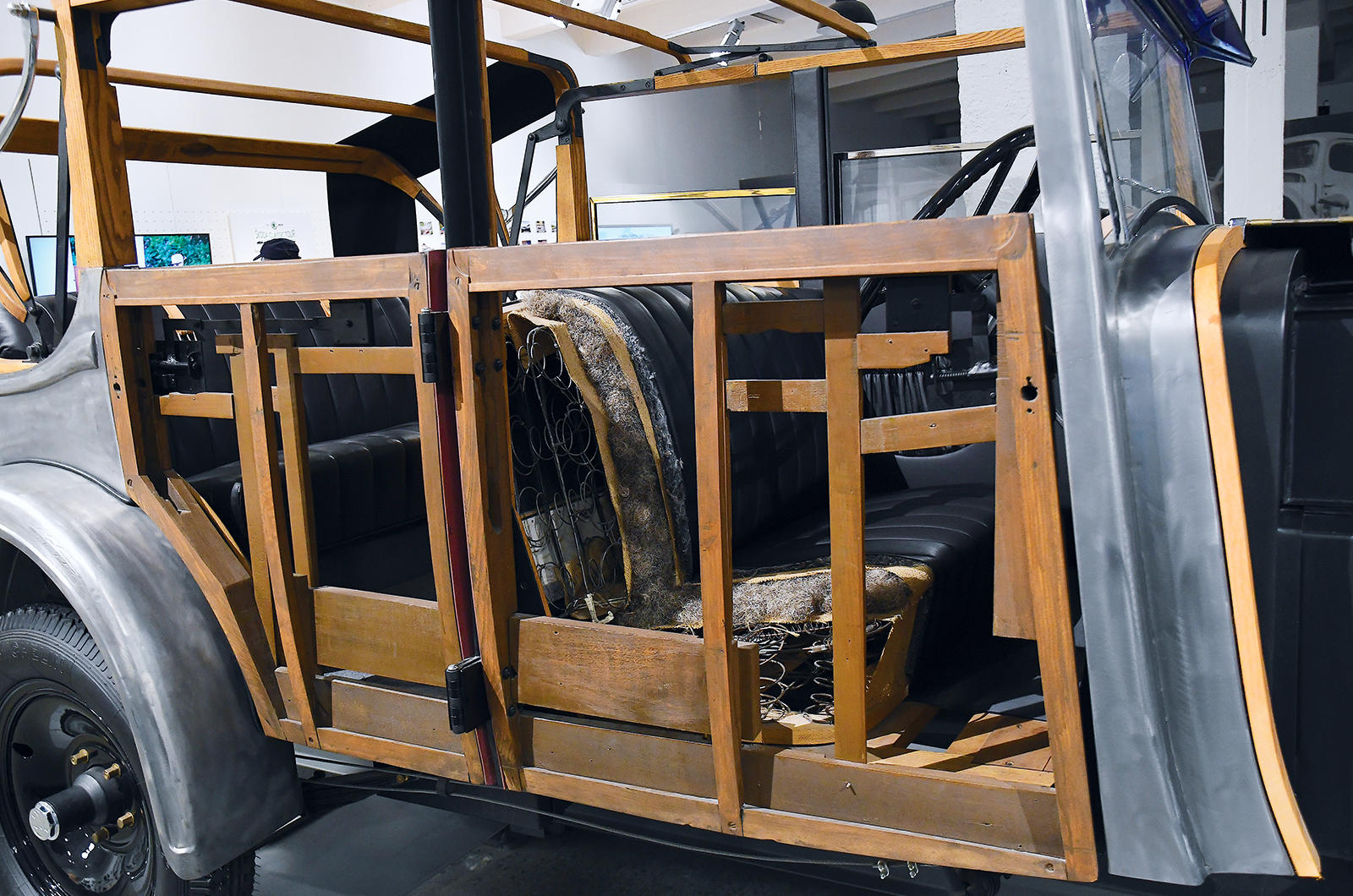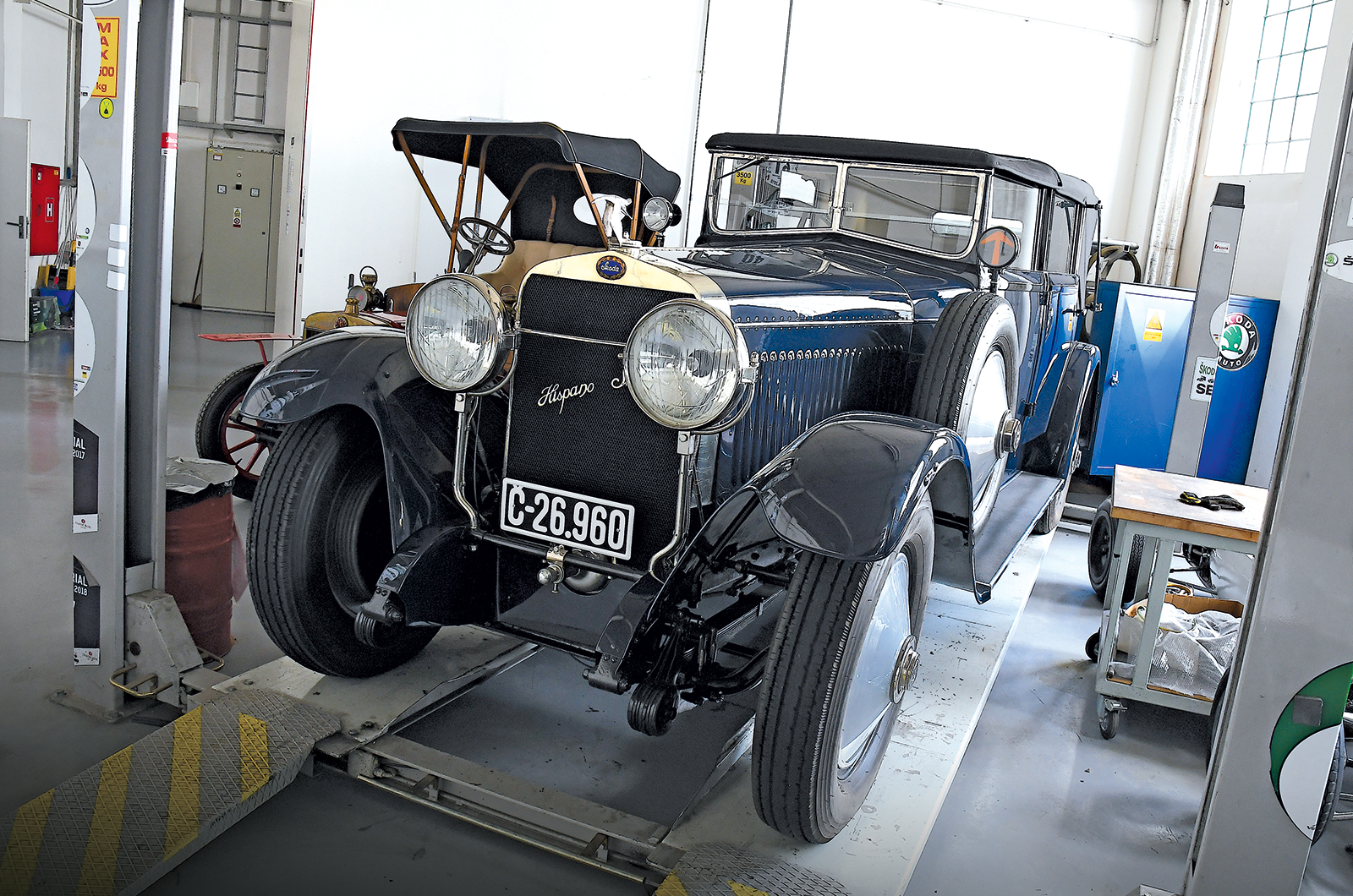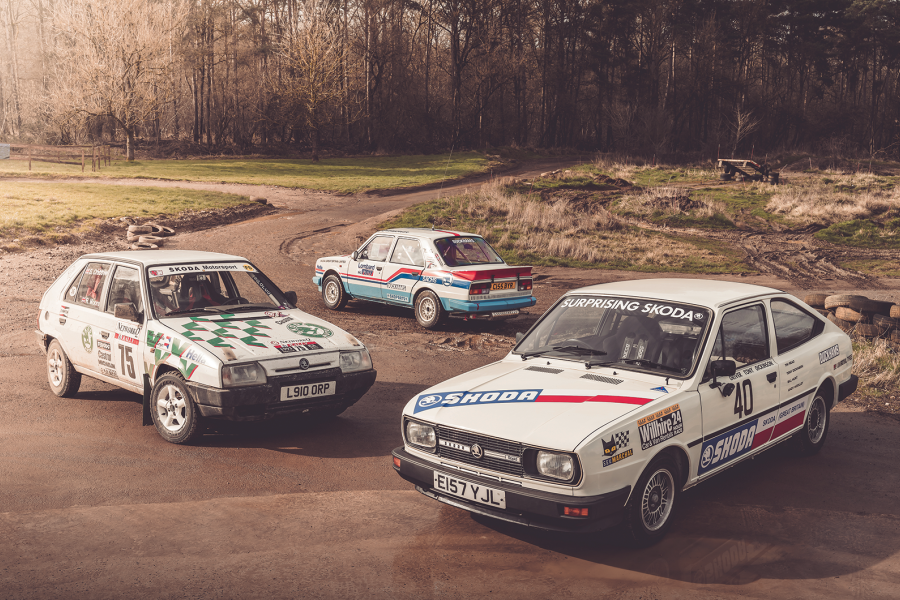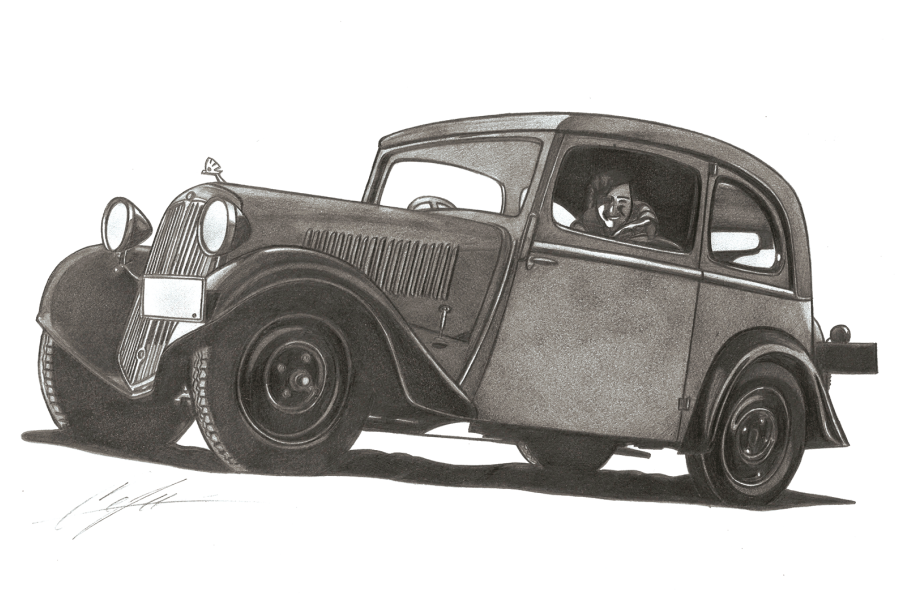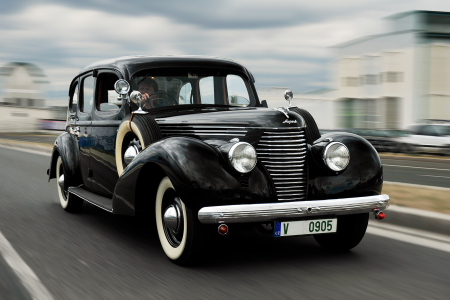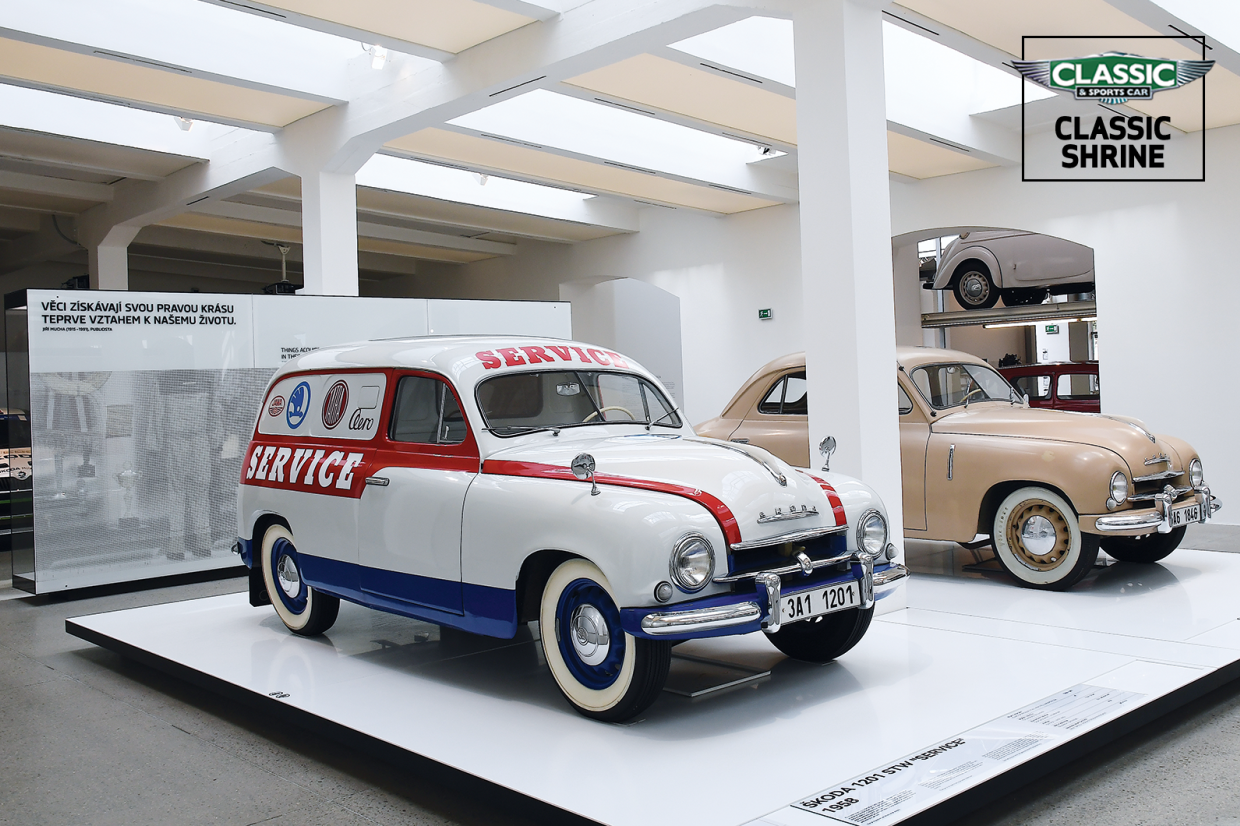
If you find yourself at a loose end in Prague, head 40 miles north-east on the E65 to the small city of Mladá Boleslav.
With a population of just 45,000, you’ll be forgiven for not realising that this is actually the country’s automotive hub.
In short, this is Škoda’s city.
Nestling among the huge factory, head office and themed restaurants (yes, really, but not in a tacky way), there lies a treat: the Škoda Muzeum.
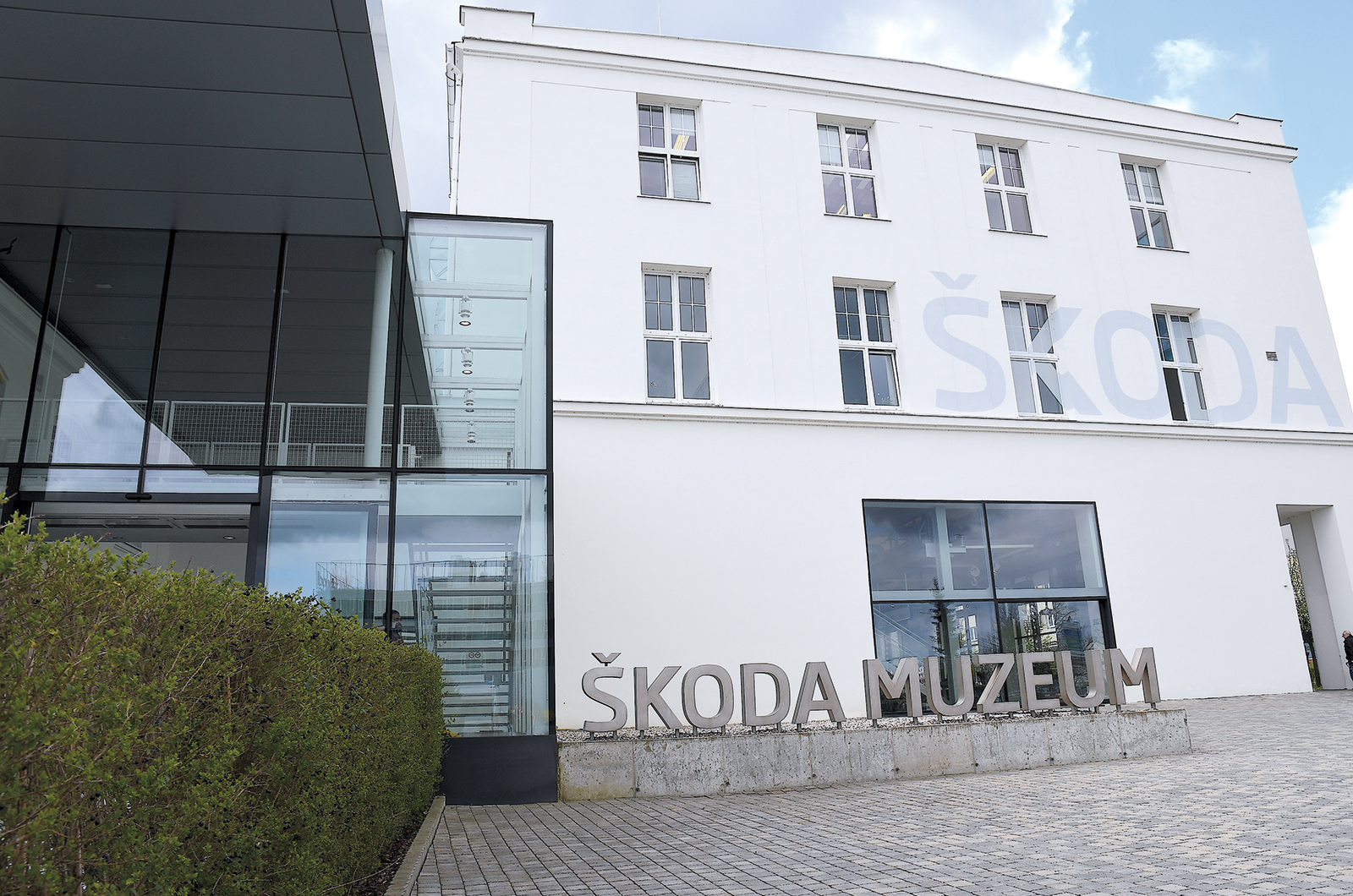
The Škoda Muzeum’s understated frontage belies both the extent and the quality of the collection of classic machinery that lies within
It sits just two buildings down from the towering main works, but is easy to miss with its inconspicuous greyness.
Luckily, the chunky Škoda signage and beautiful glass entrance draw you closer.
It’s a good thing they do, because for lovers of the Czech car maker, this place is the Holy Grail.
The museum is a collection of some 340 vehicles, from the pre-Škoda early days of Laurin & Klement right up to today’s EVs. That’s 124 years of history.
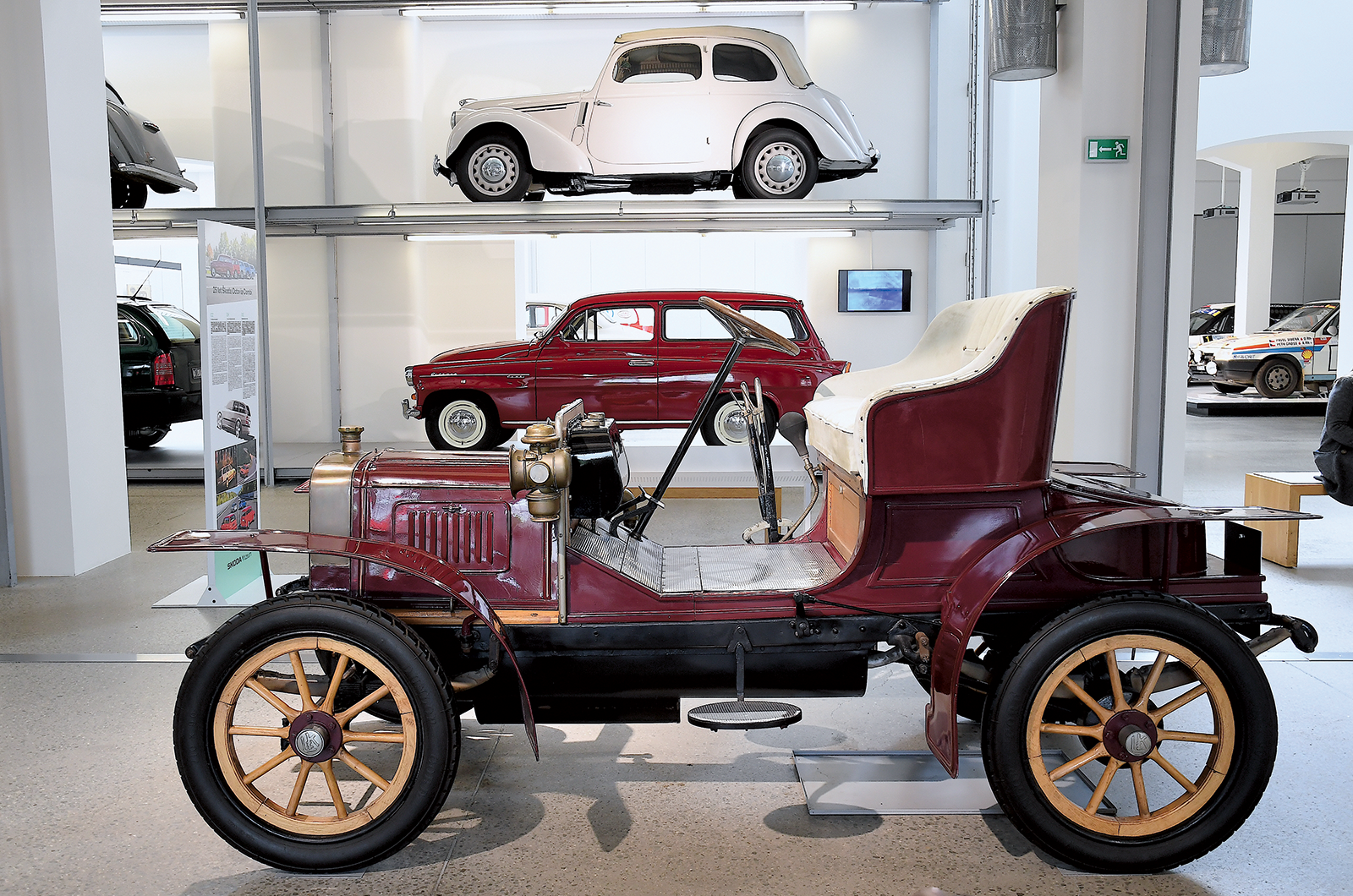
Laurin & Klement Voiturette A in the Škoda Muzeum


